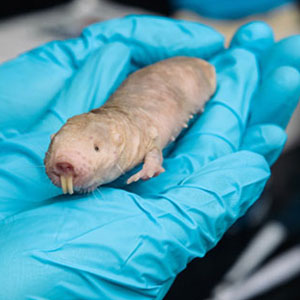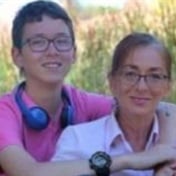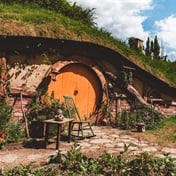
Researchers interested in learning how certain rodents manage to live long, cancer-free lives have stumbled upon a potentially valuable clue: a substance outside their cells seems to help stop malignancies from spreading.
Most research has focused on how cancer occurs inside cells. Studying the area outside the cell, in what is called the "extracellular matrix", is new territory, explained study co-author Vera Gorbunova, a professor of biology and oncology at the University of Rochester, in Rochester, NY.
The substance the team studied is a molecule called hyaluronan. The rodents, naked mole rats that are the size of mice, live about eight times longer than rats and mice do. Unlike other mammals, they also have never been known to develop cancer. As it turned out, naked mole rats have tissue rich in hyaluronan.
Hyaluronan inhibits cancer growth
Hyaluronan is also a natural component of human tissues, and it is already used to treat arthritis, cover skin in burn victims and as an ingredient in anti-wrinkle creams, according to Gorbunova.
Hyaluronan works by binding to certain receptors that control cell behaviour. Short forms of the molecule are associated with inflammation and cell growth, while the longer form (the kind the naked mole rats possess) are not linked to inflammation and prevent cell proliferation, Gorbunova explained.
In other words, for cancer cells to spread, they have to break out of the tissue. Luckily for naked mole rats, their long molecules of hyaluronan prevent that from happening.
Should the connection between the naked mole rat's form of hyaluronan and cancer prevention be proven through further research, it's likely that humans could get injections or pills that increase the amount of the molecule in their bodies, said Gorbunova. The next step is to test the ability of hyaluronan to stop the spread of cancer in mice, she added.
Thick and sticky
For the research the scientists began by looking at naked mole rat cells in a growth medium in the laboratory. They noticed that their cells seemed to grow differently than did others, allowing more space between other cells than expected, said Gorbunova.
The investigators also realised that the growth medium was somehow becoming unusually "gooey" after a couple of days. They knew that growth media with cells from humans, guinea pigs and mice did not become thick and sticky.
But the scientists had no idea what could be transforming the consistency of the growth medium. "When we saw the gooey media, I was pessimistic and thought we'd never find out what it was," noted Gorbunova. But a graduate student working on the research decided to simply "google" a description of what they had found, and learned it was hyaluronan, she added.
Next, the researchers tested what would happen if they removed the hyaluronan, and discovered that the cells then became susceptible to tumours, confirming the role the molecule plays in "cancer-proofing" naked mole rats. The scientists went on to identify the gene responsible for making hyaluronan, and learned that it was not the same as in other mammals.
Hyaluronan, which makes tissue more elastic and facilitates the healing process, is found in high concentrations in naked mole rats. The researchers think the rodents may have developed high levels of the substance to make it easier to squeeze through underground tunnels.
Gorbunova said scientists have been focusing on what was going on inside cells, and now they may start studying the extracellular matrix. "Now there may be a shift to understanding the extracellular environment as a key component in cancer development," she said.
Vadim Gladyshev, director of the Center for Redox Medicine at Brigham and Women's Hospital and Harvard Medical School, agreed. The discovery is "a little bit unexpected because it's not the typical type of cancer research -- studying the outside of cells -- rather than focusing on cell mechanisms and tumour suppressors," he said.
Gladyshev has something in common with Gorbunova: He's been studying naked mole rats, too. He published research two years ago that showed how he sequenced the full genome of the rodents, looking for clues to their exceptionally long, cancer-free lives. He thinks her findings should now be examined at the genomic level to search for pathways associated with the function of hyaluronan. His hope is that he can pursue that effort in cooperation with Gorbunova's team, he said.
More information
Learn more about cancer from the US National
Library of Medicine.




 Publications
Publications
 Partners
Partners















